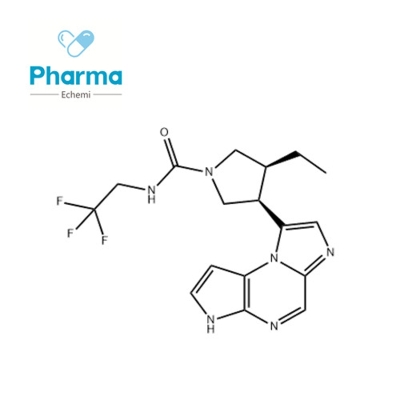How does the influenza virus, which kills hundreds of thousands of people around the world in silence every year, escape the recognition of the body's immune system?
-
Last Update: 2020-07-22
-
Source: Internet
-
Author: User
Search more information of high quality chemicals, good prices and reliable suppliers, visit
www.echemi.com
Influenza virus is a kind of fatal virus. According to who report, about 290000 to 650000 people die of influenza every year.under the natural law, there will be an influenza pandemic every 5-10 years. For example, the Spanish influenza in 1918 caused 40-50 million deaths; the Asian influenza in 1957 caused about 2 million deaths; and the 1968 Hong Kong flu caused 1 million deaths.since 2019, the outbreak of influenza in the United States has also caused more than 20 million infections, and the related death toll has exceeded 10000.however, according to the paper published in Lancet public health by Yu Hongjie team from school of public health of Fudan University and Professor Feng Luzhao of China Center for Disease Control and prevention, there were on average 88000 cases of influenza related respiratory disease excess deaths in China from November 2010 to 15, 2014.because of its lethality and epidemic, influenza virus has a serious adverse impact on human social stability, economic prosperity and quality of life. Therefore, the prevention and control of influenza is also very important.however, unfortunately, influenza viruses adapt to different hosts and undergo gene recombination each year, resulting in a large number of unique virus strains, whose pathogenicity, transmissibility and ability to cause international pandemic are unknown.studying the impact of influenza virus gene recombination on its infectivity and the ability to resist host immune system will enable us to better predict the pandemic potential of influenza virus and help develop vaccines and antiviral drugs.recently, the Journal of biological chemistry published a research paper entitled "the influenza NS1 protein modules RIG-I activation via a strain specific direct interaction with the second card of rig-i.this study reports the biological effects of influenza virus NS1 protein binding to host receptor protein RIG-I, which directly eliminates the alarm of activating cellular innate immunity.this is a new method of influenza virus anti-virus response to host cells.the corresponding author, Dr. Chad Petit, and his research team analyzed the natural variation of an influenza virus strain (udorn) that broke out in Russia in 1972 and compared it with the strain that caused the Spanish flu in 1918. The mutation was found in the NS1 protein of the influenza virus.as early as 2015, Chad Petit and his colleagues first demonstrated that NS1 of the 1918 Spanish influenza virus strain had a direct interaction with rig-i. RIG-I is the main sensor for cell detection of influenza virus infection and can activate the innate immunity of host cells.in addition, the RNA binding domain of NS1 protein of 1918 Spanish influenza virus strain had no known function before.the mutation in the NS1 protein of the 1972 Russian influenza strain udorn was a 21 amino acid transition from arginine to glutamine. In this study, the researchers used reverse genetics to transform the mutation into a 1934 Puerto Rican influenza strain. Then they compared the function of wild-type NS1 and mutant NS1 protein.using molecular biology techniques, the researchers found that when wild-type NS1 antagonized the RIG-I signal to induce innate immunity, the mutant NS1 allowed this signal.specifically, the ability of NS1 mutant to bind to RIG-I was significantly reduced, and RIG-I could trigger innate immunity, especially by increasing the ubiquitination of trim-25 of RIG-I, which was a key step in activating RIG-I, and resulted in increased phosphorylation of IRF3 and increased production of interferon type I.however, the altered amino acids in the mutant NS1 did not affect the other two known ways in which NS1 blocked cellular innate immune response binding to double stranded RNA and to trim-25 cell protein. next, Chad Petit and others continue to explore why this natural mutation exists. the alignment of NS1 protein sequences in the influenza virus research database showed that the mutation of amino acid 21 may be related to species-specific adaptation. in human influenza A virus, 63% of NS1 protein amino acids are arginine and 36.7% are glutamine; swine strains are 92.1% arginine and 6.4% glutamine; bird strains are 79.9% arginine, 0.8% glutamine and 19.1% leucine. in addition, the 21st amino acid of NS1 protein of seasonal epidemic and highly pathogenic influenza virus strains in human is also different: H1N1 and H3N2 are 75.4% arginine and 24.5% glutamine, 1% arginine and 98.8% glutamine respectively; H5N1 and h7n9 are 100% arginine and 0% glutamine, 95.8% respectively 9% arginine and 2. 3% glutamine. in terms of functional diversity, NS1 protein is like a Swiss Army knife. this study highlights the importance of how mutations in the NS1 protein of influenza virus strains affect their ability to respond to host cell immunity. of course, this point needs to be further studied. in conclusion, this study reports that binding of wild-type NS1 protein with host receptor protein RIG-I can eliminate the alarm of activating cellular innate immunity. however, the mutant NS1 protein (r21q) of the influenza virus udorn in Russia in 1972 may be related to species-specific adaptation. the discovery of this mechanism will enable us to better predict the pandemic of influenza virus and help develop vaccines and antiviral drugs. paper links:
This article is an English version of an article which is originally in the Chinese language on echemi.com and is provided for information purposes only.
This website makes no representation or warranty of any kind, either expressed or implied, as to the accuracy, completeness ownership or reliability of
the article or any translations thereof. If you have any concerns or complaints relating to the article, please send an email, providing a detailed
description of the concern or complaint, to
service@echemi.com. A staff member will contact you within 5 working days. Once verified, infringing content
will be removed immediately.







